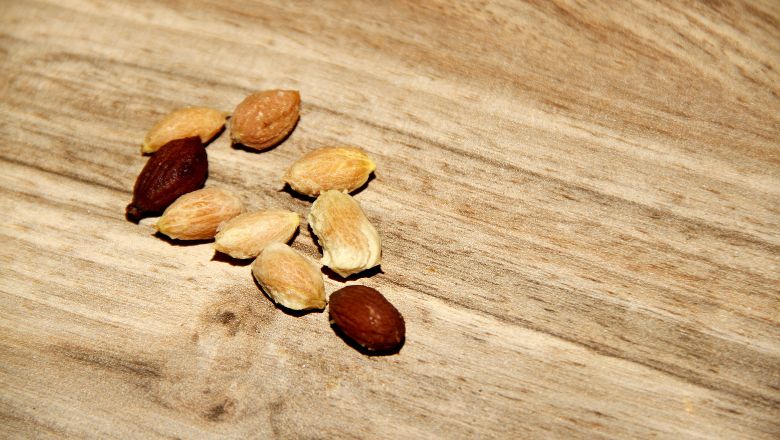What Can Olive Pits Be Used For? (Don’t Throw Them)
Olive Knowledge is a part of Amazon Associates. As an Amazon Associate, we earn from qualifying purchases. Read our Affiliate Disclosure to learn more.
The pit or seed of olive was traditionally thrown away as waste. However, new optical sorting technology is able to extract the seeds from inside the olive pits, which can then be consumed raw or toasted as a snack.
These manufacturers are exploring new uses for typically discarded products. In fact, olive pits have a number of health-promoting qualities that might be utilized in supplements, meals, cosmetics, and other items.
In this post, I’ll show you interesting ways you can use olive pits so you don’t end up throwing them away.
5 Ways You Can Use Olive Pits

You can use olive seeds or olive pits for a variety of purposes. Keep reading to discover what a great find you have on hand.
Olive Pit Powder For Medication and Health Benefits
Olive seeds have been discovered to have high levels of dietary fiber, which is especially good for the heart and muscles, as well as outstanding antioxidant and polyphenol properties.
The seeds found inside the olive stone can be used to obtain a highly concentrated oil that has more positive effects on health than regular olive oil. The polyunsaturated fatty acid omega-6, linoleic acid, terpenic acid, sterols, and polyphenols found in high concentrations in olive seed oil are what make it unique.
These elements are four times more than in a typical “virgin extra” olive oil. In addition to their usefulness for food, cosmetics, or pharmaceutical uses, these bioactive chemicals have positive impacts on health as antioxidants, anti-inflammatories, cardioprotective agents, and anti-tumor agents, among others.
Olive Pit Powder For Cosmetic & Health
Ground olive stones work well as a sustainable substitute for microplastics in cosmetic and domestic uses. They also have a considerable advantage over other natural granules made of wood, corn, cellulose, silica, pumice, or other materials due to the aforementioned benefits.
In particular, studies have shown that the desired abrasive impact can be produced with up to 5% less material in abrasive applications such as exfoliants or heavy-duty cleaners, hand cleaners, or hand-washing pastes. Grain stability and hardness contribute to increased efficiency.
Another research on ScienceDirect shows that olive stone powder may be a fantastic source of additional fiber and antioxidants.
Olive Pit as a Food Source
Pure ground olive stones have long been valued in material science as a filler material with additional value for ceramics, coatings, composites, polymers, asphalt, and bitumen.
The seed can be consumed as a filling for sweet and savory baked items, added to bread dough, or even roasted and caramelized to make interesting and healthful ice cream or chocolate filling.
The seed oil can be used as an even healthier substitute for regular olive oil, and the flour can be used in place of regular flour, as a healthier breading for meats and potatoes, or as a topping for salads.
Olive Pits As a Source Of Heat And Energy
The Mediterranean region has long used dry olive leftovers for heating and cooking. In many nations, it is already common to use biomass to generate energy. Olive waste has the potential to be used in the future as a renewable energy source.
Burning olive waste is easy. People use it to maintain the flame of their fireplaces throughout the night and to heat homes during the winter. But there are more extensive uses for this trash. Today, olive corporations use the electricity generated by the pits of olive trees to power entire plants.
A Spanish startup called Calordom is using the burning of olive waste to power a few houses. The possibility of pollution that could result from burning has been questioned.
Fortunately, scientists are developing new strategies to transform those pits into energy, representing a positive step toward developing sustainable and clean biofuels.
For instance, barbecue briquettes made from olive pits emit 30% less carbon monoxide than wood charcoal, according to KLIMIS.
Olive Pit As a Fuel Source
You might be surprised to learn that olive pits can provide energy in a variety of ways, even though we already know they are more than just waste. According to the non-profit engineering association ASME, when it comes to energy production through burning, olive pits actually outperform hardwood pound for pound.
A renewable energy source obtained from the extraction of olive oil is the woody portion of olive pits, which are a byproduct of pomace manufacturers and are used to make biomass fuel.
According to the study, olive pits in their densified form are excellent fuel for gasification in a downdraft gasifier, yielding an average of 2.5 Nm3 of product syngas per kilogram with a calorific value of 4.5 to 5.0 MJ/Nm3. This process successfully converted carbon to product gas to a level of over 97%, but it is still important to apply an efficient gas cleanup system to protect against any potential negative effects of tars and condensates in the product syngas.
Frequently Asked Questions
There is no toxicity in olive pits. Olives on the tree are eaten by numerous birds and other creatures. Most of the pits are made of lignin, a key ingredient in wood. One would probably pass through you unharmed if you ate one.
Yes, in the fall, when the olive fruits are ripe, you can start an olive tree from a pit, also known as a seed. Even though it’ll take some time, it’s totally doable.
Experts in the field of olives claim that olives with pits inside are more flavorful than those without.
According to a study, no one ever had a problem with eating them in small quantities. So yes, olive pits are digestible, even though we don’t recommend eating too much of them.
